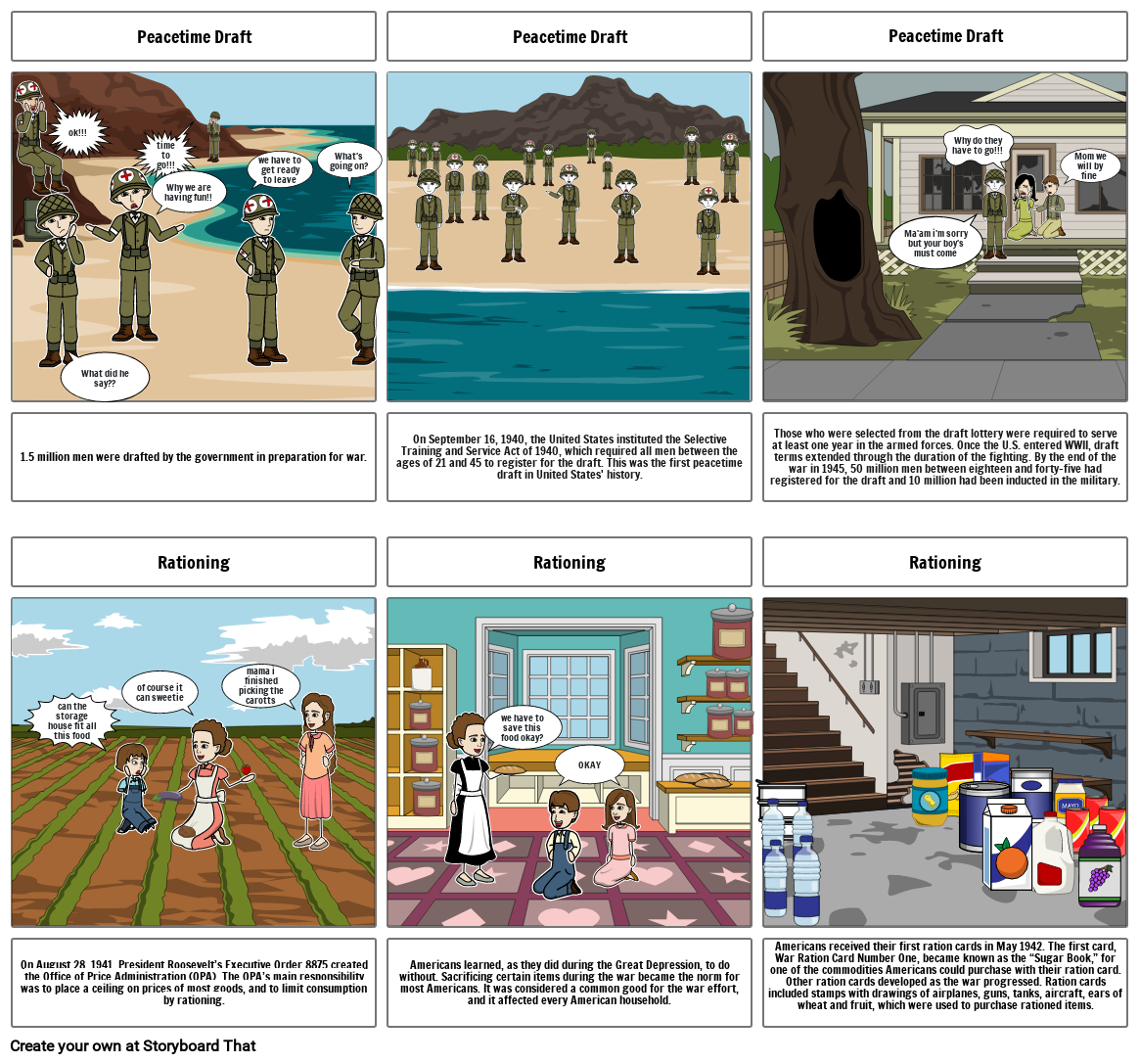American Homefront WW2

Kuvakäsikirjoitus Teksti
- Peacetime Draft
- ok!!!
- time to go!!!
- Why we are having fun!!
- we have to get ready to leave
- What's going on?
- Peacetime Draft
- Peacetime Draft
- Ma'am i'm sorry but your boy's must come
- Why do they have to go!!!
- Mom we will by fine
- 1.5 million men were drafted by the government in preparation for war.
- Rationing
- What did he say??
- of course it can sweetie
- mama i finished picking the carotts
- On September 16, 1940, the United States instituted the Selective Training and Service Act of 1940, which required all men between the ages of 21 and 45 to register for the draft. This was the first peacetime draft in United States' history.
- Rationing
- Those who were selected from the draft lottery were required to serve at least one year in the armed forces. Once the U.S. entered WWII, draft terms extended through the duration of the fighting. By the end of the war in 1945, 50 million men between eighteen and forty-five had registered for the draft and 10 million had been inducted in the military.
- Rationing
- On August 28, 1941, President Roosevelt’s Executive Order 8875 created the Office of Price Administration (OPA). The OPA’s main responsibility was to place a ceiling on prices of most goods, and to limit consumption by rationing.
- can the storage house fit all this food
- Americans learned, as they did during the Great Depression, to do without. Sacrificing certain items during the war became the norm for most Americans. It was considered a common good for the war effort, and it affected every American household.
- we have to save this food okay?
- OKAY
- Americans received their first ration cards in May 1942. The first card, War Ration Card Number One, became known as the “Sugar Book,” for one of the commodities Americans could purchase with their ration card. Other ration cards developed as the war progressed. Ration cards included stamps with drawings of airplanes, guns, tanks, aircraft, ears of wheat and fruit, which were used to purchase rationed items.
Yli 30 miljoonaa kuvakäsikirjoitusta luotu

